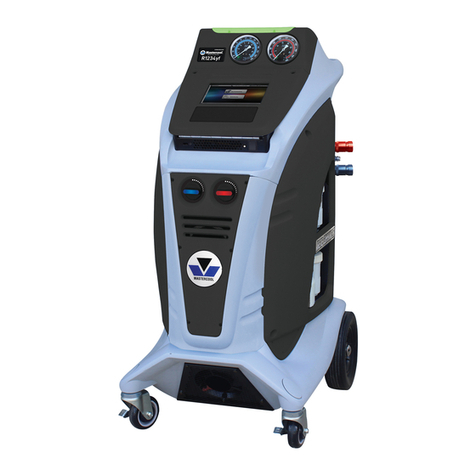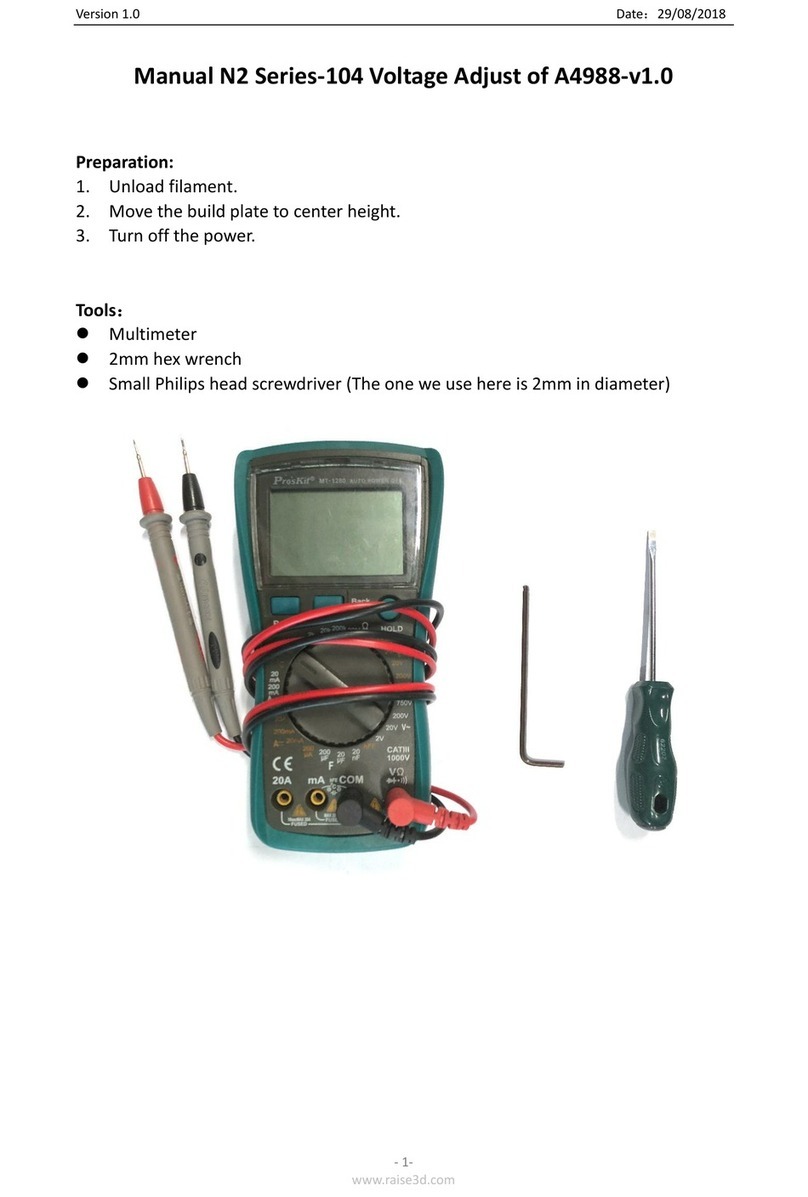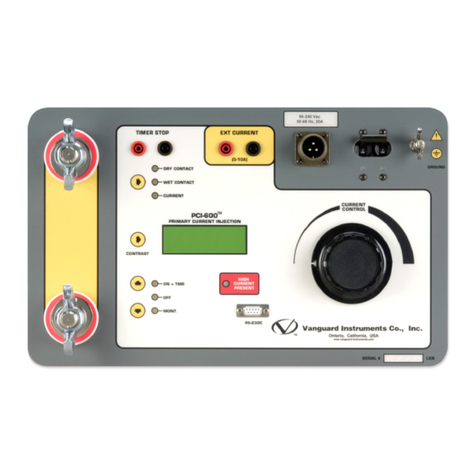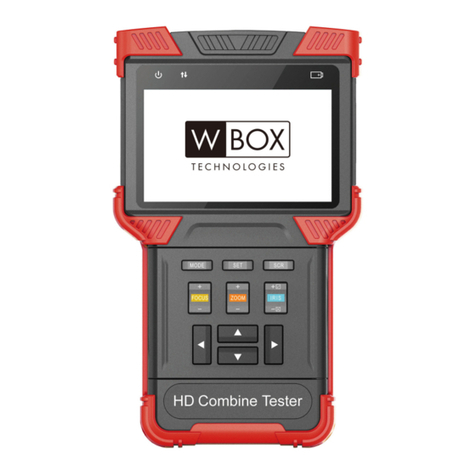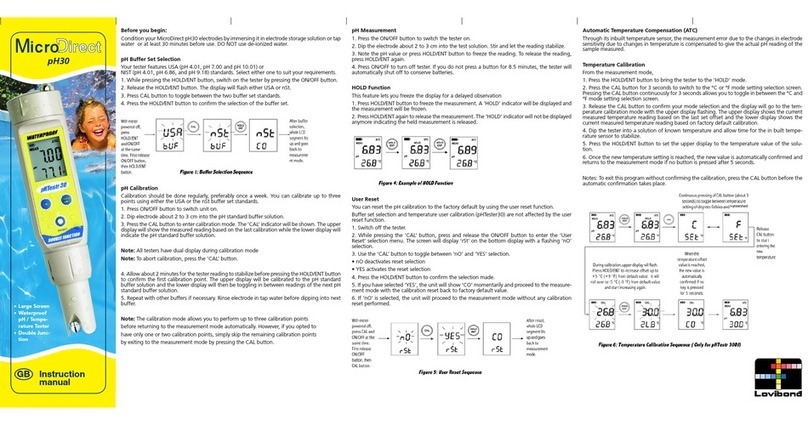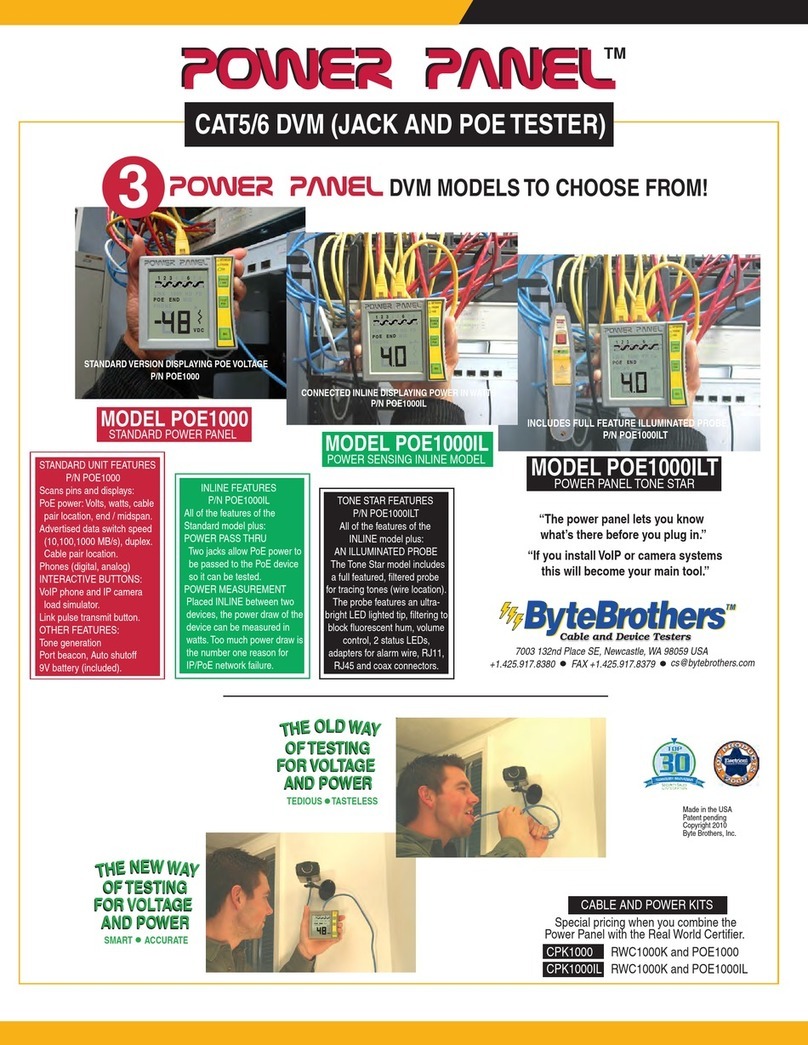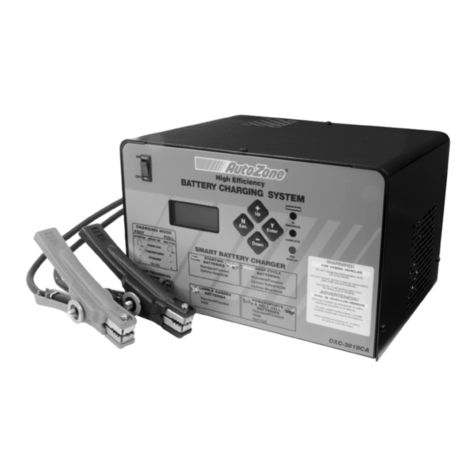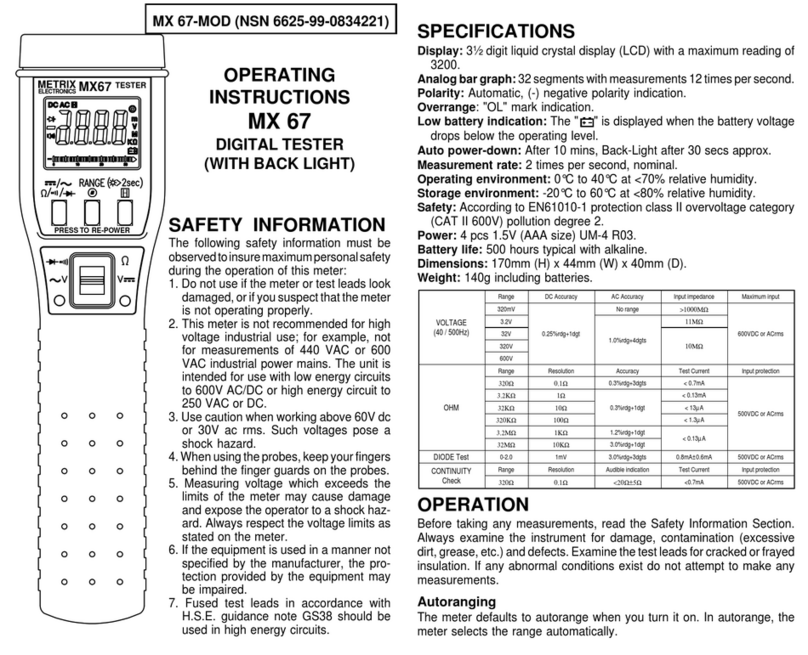Lawson TXLS ROV Manual

LAWSON ENGINEERS LTD Ref : PJ1682
Issue Date : 06.06.2006
LAWSON
ENGINEERS LTD
Mechanical & Structural Engineers
Carlisle, England, 44 (0) 1228-711470
OPERATION & MAINTENANCE MANUAL
TXLS ROV
LAUNCH & RECOVERY SYSTEM
EQUIPMENT REFERENCE
LAWSON ENGINEERS LTD : PJ1682
PSSI ORDER REF : PO 61917
- 1 -

LAWSON ENGINEERS LTD Ref : PJ1682
Issue Date : 06.06.2006
INDEX.
________________________________________________________________________
1GENERAL DESCRIPTION................................................................................................................... 3
1.1 WINCH .......................................................................................................................................... 3
1.2 POWER PACK .............................................................................................................................. 3
1.3 A-FRAME ...................................................................................................................................... 7
1.4 SNUBBER...................................................................................................................................... 7
2SYSTEM LEADING PARTICULARS ................................................................................................. 9
2.1 DESIGN ENVIRONMENT ........................................................................................................... 9
2.2 'A' FRAME & SKID....................................................................................................................... 9
2.3 SNUBBER...................................................................................................................................... 9
2.4 WINCH .......................................................................................................................................... 9
2.5 POWER PACK ............................................................................................................................ 10
2.6 PUMP ........................................................................................................................................... 10
2.7 MOTORS ..................................................................................................................................... 11
2.8 COILER MOTOR ........................................................................................................................ 11
2.9 SNUBBER ROTATE MOTOR.................................................................................................... 11
2.10 RESERVOIR................................................................................................................................ 11
2.11 COOLER ...................................................................................................................................... 11
2.12 FILTERS ...................................................................................................................................... 11
2.13 CYLINDERS................................................................................................................................ 12
2.14 SNUBBER AIR SPRINGS .......................................................................................................... 13
3LIFT POINTS....................................................................................................................................... 14
4SYSTEM ASSEMBLY PROCEDURE ............................................................................................... 15
5SAFETY PRECAUTIONS................................................................................................................... 20
6SYSTEM OPERATING INSTRUCTIONS ......................................................................................... 22
6.1 POWER PACK START UP......................................................................................................... 22
6.2 WINCH ........................................................................................................................................ 22
6.3 A-FRAME .................................................................................................................................... 23
6.4 SNUBBER.................................................................................................................................... 23
6.5 HPU CONTROLS and SYSTEM MONITORING. ..................................................................... 25
6.6 SAFETY CIRCUIT ...................................................................................................................... 26
7TROUBLE SHOOTING. ..................................................................................................................... 27
7.1 THE HYDRAULIC SYSTEM. .................................................................................................... 27
7.2 THE ELECTRICAL CIRCUIT .................................................................................................... 29
7.3 AUTOMATIC GREASING SYSTEM ........................................................................................ 48
8MAINTENANCE................................................................................................................................. 49
8.1 HYDRAULIC MAINTENANCE PROCEDURES...................................................................... 49
8.2 MANUAL LUBRICATION SCHEDULE................................................................................... 50
8.3 AUTOMATIC LUBRICATION SYSTEM.................................................................................. 51
9SUBSYSTEM DISASSEMBLY / ASSEMBLY.................................................................................. 52
9.1 WINCH DISASSEMBLY PROCEDURE. .................................................................................. 52
9.2 WINCH ASSEMBLY PROCEDURE.......................................................................................... 53
9.3 A-FRAME / SKID DISASSEMBLY PROCEDURE................................................................... 53
9.4 A-FRAME / SKID ASSEMBLY PROCEDURE. ........................................................................ 54
9.5 SNUBBER DIS-ASSEMBLY PROCEDURE. ............................................................................ 54
9.6 SNUBBER ASSEMBLY PROCEDURE..................................................................................... 55
10 STORAGE PROCEDURES............................................................................................................. 56
10.1 MONTHLY STORAGE MAINTENANCE SCHEDULE........................................................... 56
10.2 START-UP AFTER STORAGE. ................................................................................................. 56
11 RECOMMENDED SPARES ........................................................................................................... 57
12 DRAWINGS & PARTS LISTS........................................................................................................ 58
13 MANUFACTURER’S INFORMATION......................................................................................... 59
- 2 -

LAWSON ENGINEERS LTD Ref : PJ1682
Issue Date : 06.06.2006
1 GENERAL DESCRIPTION.
1.1 WINCH
See drawings SW1618A-0001 Winch Assembly
The winch consists of a fabricated drum mounted on a large ring bearing together with a
smaller support bearing at the slipring end. On the internal diameter of the ring bearing
are gear teeth which mesh with the pinions of the main drive motors. The drive motors,
ring bearing and support bearing are mounted on a bed frame. Also mounted on the bed
frame are the control junction boxes and the bump (collision) frame. The coiling
(spooling) gear is mounted on the bump frame. The bump frame is completely removable
along with the coiling gear and guards.
The automatic coiling gear is a hydraulic powered, electrically actuated, system. The
coiler box is moved left to right when initiated by the umbilical cable.
Left to right movement is achieved by hydraulically driving a shaft with a standard
trapezoidal screw thread. A captive nut then drives the coiler box.
Movement of the coiler box is initiated by the amount of offlead angle of the umbilical
cable from the coiler box itself.
The horizontal travel-sensing frame is mounted on the back of the box.
The coiler box is constructed with an open top to allow the umbilical to pass through to
accommodate the change in vertical offlead angle as the A-frame moves and when
connecting the umbilical to the drum.
1.2 POWER PACK
See drawings SW1673X-0002 Hydraulic schematic
SW1618B-0001 Power pack assembly
SW1673X-0008 Electrical schematic
SW1673X-0007 Electrical Cabling Diagram
Enclosed in a R.H.S. bump frame, the power pack provides hydraulic oil to run the
winch, A-frame and snubber. The two-stage electric motor driven pumps are mounted
directly below the reservoir and have flooded suction inlets.
Stage 1. An axial displacement variable swash plate piston pump with load sensing
and power limiting facilities. It provides main power to the winch and A-
frame. A relief valve is fitted to the winch control manifold to provide a
maximum pressure cut off. A pressure reducer is fitted to this manifold to
reduce the pressure to the A-Frame supply
- 3 -

LAWSON ENGINEERS LTD Ref : PJ1682
Issue Date : 06.06.2006
Stage 2. An axial displacement variable swash plate piston pump. It supplies the
coiling gear on the winch, and the various functions on the A-Frame and
Snubber.
Pump Stage 1 has a feedback loop from the Winch Drive and the Winch/A-Frame Stack
to ensure the pump pressure stays at only 20 bar above the required drive pressure, (Load
sensing control).
This is done to reduce heating in the pump when the system is not operating but the pack
is running.
The pump drain line and winch brakes return line are connected direct to the reservoir.
The pump self relieves at 230 bar which prevents the winch circuit from seeing excessive
pressure.
Other power pack equipment includes: -
Seawater oil cooler with external bypass check.
Pressure & return line filters, 10µ abs.
Relief valves for stages 1 & 2.
4 - off lockable suction line isolation valve.
Tank filler point - 1/2" male quick release coupling (mating female half supplied loose
with system)
Tank filler filter 10 µ abs.
Twin 75 kW Star-Delta starter.
Reservoir equipment - Suction strainer 125 µ
Return line diffuser
Level gauge
Reservoir breather
Heater 2 kW
Oil level/temp switch.
The following is a brief description to the operation of the major valves in the hydraulic
circuit reference drawing SW1673X-0002
Winch Counterbalance valves Item 16. These valves are fitted to give dynamic
and static control of the load on the winch. The valves also prevent runaway in the event
of a burst hose. They provide pilot pressure to release the brakes but only when sufficient
pressure is available to control the load, in a hoisting or lowering direction.
Brake sequence valves Item 30. These valves are piloted by the signal
from the Winch Counterbalance valves or motor return line and ensure the brake is not
released prematurely. When the signal decays they open and divert brake pressure direct
to tank thus giving a fast response to brake operation.
- 4 -

LAWSON ENGINEERS LTD Ref : PJ1682
Issue Date : 06.06.2006
Coiler DCV Stack Item 91,92 and 93. The sensors on the coiler
control this valve electrically; it moves the coiler in either direction. A pressure reducer
controls the pressure to the coiler motor.
Winch Stack Items 84,85 . This valve controls the flow to the winch motors. The
joystick on the desk proportionally controls them.
A-Frame Stack Items 87,88 and 97. This valve controls the flow to the Luff,
Leg Extend/Retract and Skid Extend/Retract. The joystick on the desk proportionally
controls them. A relief valve is fitted to prevent excessive pressure to the A-Frame
circuit.
Overload Isolation Valve Items 113 and 114 An overload protection valve is fitted
which is connected to the load cell output, it will only allow oil through this valve when
the load cell is working within the system parameters. If overload occurs the valve closes
stopping flow to the full bore area of the cylinder but allowing flow to the annulus area of
the cylinder allowing the rod to be retracted.
Latch Drain Check Valve Item 15. Fitted in the drain line from the latch sequence valve
this valve prevents any backpressure in the drain line from opening the latches.
Latch Sequence Valve Item 31. This valve will only allow the latches to open when
sufficient pressure has built up in the latch open line. When the pressure decays the valve
returns the oil in the latch cylinders to drain giving a fast response.
Snubber Raise/Lower Pressure Reducing Valves Item 80. These valves are set at a very
low pressure to prevent the Snubber Raise/Lower Cylinders from exerting excessive
force, causing damage to the flotation on the ROV or TMS.
Snubber Raise/Lower Counter Balance valve Item 81. These valves are fitted to
control the flow in and out of the Snubber Raise/Lower Cylinders and prevent the
cylinders from extending if there is a burst hose.
Snubber In/Out Stack Items 103,104 and 106. This is part of the 5-stack manifold on the
Snubber. Push buttons on the control desk control it. Dual Relief Valves are fitted which
allows the snubber to swing if the load induces a pressure exceeding the counterbalance
valve setting.
Snubber Lock/Damping Stack Items 94,95 and 96. This valve is located close to
the 5-stack manifold on the Snubber and is Teed into the A and B lines of the Snubber
In/Out Stack. In the energised condition the spool is all ports blocked allowing the
Snubber In/Out Stack to operate normally. In the de-energised condition it allows oil
from the Snubber Damping Cylinders to flow through the flow control slices giving
control of the speed of swing of the snubber.
- 5 -

LAWSON ENGINEERS LTD Ref : PJ1682
Issue Date : 06.06.2006
Snubber Raise/Lower Stack Items 103,104 and 106. This is part of the 5-stack
manifold on the A-Frame. Push buttons on the control desk control it. Dual Relief Valves
are fitted to limit the pressure to the Snubber Raise and Lower Cylinders
Snubber Left/Right Stack Items 103,104 and 106. This is part of the 5-stack
manifold on the A-Frame. Push buttons on the control desk control it. Dual Relief Valves
are fitted to limit the pressure to the Snubber Raise and Lower Cylinders
Rotate Stack Items 103,105,107 and 108. This is part of the 5-stack manifold on the
A-Frame. Push buttons on the control desk control it. A Pressure reducer limits the
pressure to the Snubber Rotate Motor. Dual Flow Control Valves limit the flow of oil to
the Snubber Rotate Motor controlling the speed of rotation.
Latches Stack Items 103,105 and 107. This is part of the 5-stack
manifold on the A-Frame. Push buttons on the control desk control it. A Pressure reducer
limits the pressure to the latch cylinders.
Main Pressure line check valves Item 14. If only one pump set is running these
valves stop oil being pushed in reverse direction through the stationary pump.
Auxiliary line check valve Item 23. If only one pump set is running these
valves stop oil being pushed in reverse direction through the stationary pump.
Leg Extend Cylinders Item 109 are fitted with dual counterbalance valves These valves
are fitted to give dynamic and static control of the load on the cylinders. The valves also
prevent runaway in the event of a burst hose.
Skid Extend Cylinders Item 111 are fitted with dual counterbalance valves Item 110.
These valves are fitted to give dynamic and static control of the trolley cylinders. The
valves also prevent runaway in the event of a burst hose.
Trolley Extend Flow Control Valve Item 120 limits the flow of oil to the Trolley Extend
Cylinder controlling the speed of movement.
A-frame erection valve & auxillary cct. RV. Item 115 This valve is used to erect the A-
Frame from the stowed position prior to Lifting the Winch onto the Rear of the Skid.
A/Frame Hoses C1 and C2 are of sufficient length to stretch to the Powerpack and have
the same QRC’s fitted
- 6 -

LAWSON ENGINEERS LTD Ref : PJ1682
Issue Date : 06.06.2006
1.3 A-FRAME
See drawing SW1618C-0001 ‘A’ Frame Assembly
The base (skid) is manufactured as a weldment from universal column and rolled steel
channel. The floor surface is covered with chequer plate which has a non-slip coating
applied under the topcoat of paint. The skid has the capability of extending outboard to
provide extra space for maintenance and to allow for the storage of the T.M.S. when
separated from the R.O.V.
Note - In the extended position the trolley is capable of supporting the full SWL (ROV +
TMS + Work Package). We recommend however that the trolley be not loaded thus
Offshore. The trolley is capable of supporting the TMS offshore.
The skid is capable of having the umbilical winch mounted in two positions, either
directly on top at the rear, or separate from the skid at some distance behind.
The skid is fitted with four lifting eyes for transport as well as lashing down points for
securing the ROV during transit voyages. The lifting eyes are rated for lifting the skid,
‘A’ frame and snubber but not the ROV or TMS.
The ‘A’ Frame is manufactured from rectangular hollow section and is capable of
handling various T.M.S. / R.O.V. / toolskid combinations. This is achieved by
hydraulically powered extension pieces that vary the length of the ‘A’ frame legs.
The cross beam has pinned connections for the snubber assembly.
Lift eyes are provided for the lifting of the legs and each sub assembly of the A-frame.
External face of leg pieces fitted with ladder rungs to permit access to the docking /
snubber and pulley assemblies.
Static guides are welded to the legs to aid guidance of the R.O.V. / toolskid assembly as it
moves between the legs during recovery.
The legs are moved by hydraulic rams that feature built-in counterbalance valves. The
ram mounting brackets have two positions on the skid to achieve a lower stowed position
for transport.
1.4 SNUBBER
See drawing SW1673D-0001 Snubber Assembly
The function of the snubber is twofold – firstly to capture the vehicle on mechanical
latches in order to take the strain off the umbilical cable during launch/recovery
operations, and secondly to align the vehicle and hold it in position while passing it
between the ‘A’ frame legs.
The assembly comprises of a damping frame pinned to the crossbeam that controls the
fore and aft swing. The sheave is pinned to the damping frame and articulates
transversely. The lower frame is suspended from the damping frame by a pair of hoist
cylinders and also guides the sheave. The hoist cylinders control both the side-to-side
motion of the snubber and the up and down motion. Mounted to the lower frame by a ring
- 7 -

LAWSON ENGINEERS LTD Ref : PJ1682
Issue Date : 06.06.2006
bearing is the rotating frame. The rotating frame realigns the vehicle assembly to permit
recovery through the legs of the A-frame.
Mounted to the rotating frame is the docking box. This safely captures the vehicle
system, removing lift forces from the umbilical cable, by means of two mechanical
latches that are sprung on and hydraulically released. Also mounted to the rotating frame
is the sprung frame that cushions the vehicle during latching operations.
There is a facility to pass the umbilical assembly over the sheave and through the snubber
assembly without major disassembly. The removable flare pieces must be unbolted from
the sheave and the plastic umbilical guides must be removed from the docking box. The
docking box is sized to pass the umbilical termination without any further disassembly.
There is also an overload protection facility. This is controlled by a loadcell that supports
the sheave. Once the tension in the umbilical rises above the set point an alarm sounds
and further movement of the A frame outboard is impossible.
Rotational movement 200 degrees.
Vertical movement 600mm
Transverse movement +/- 20 degrees
CAUTION – The 20 degrees sideways motion is
only limited by proximity switches. If
these fail the structure will be damaged as
the cylinders over extend. Check the
function of the proximity switches
regularly and keep a good visual check if
operating close to the limit of the swing.
- 8 -

LAWSON ENGINEERS LTD Ref : PJ1682
Issue Date : 06.06.2006
2 SYSTEM LEADING PARTICULARS
2.1 DESIGN ENVIRONMENT
Air Temperature -20 + 40ºC
Sea State 6 Significant Wave Height 6.0m
Wind Speed Beaufort 6 - 13.9 m/s.
2.2 'A' FRAME & SKID
SWL 9550 kg in Air ROV weight
Design Load 28650 kg
Inboard reach, max leg extension 4300mm
Inboard reach, min leg extension 3100mm
Deployed reach, max leg extension 4650mm
Deployed reach, min leg extension 3277mm
Height (Stowed) 2440mm
Length 8000mm
Width 2900mm
Height under A-frame at inboard position
max leg extension 4750mm
min leg extension 2200mm
Width between A-frame legs 2300mm
Weight 16000kg
2.3 SNUBBER
Raise/lower 600mm
Lateral tilt +/- 20°
CAUTION – The 20 degrees sideways motion is
only limited by proximity switches. If
these fail the structure will be damaged as
the cylinders over extend. Check the
function of the proximity switches
regularly and keep a good visual check if
operating close to the limit of the swing.
Longitudinal tilt +/- 15° beyond ‘A’ frame luffing motion
Rotate 200°
2.4 WINCH
SWL Top layer 9550 Kg
Design load 28650 Kg
Maximum line speed 70 m/min @ ROV in water
on top layer.
Length of umbilical coiled 3300m on 13 layers
Umbilical Dia. (outer) 42.5 to 45.5mm
Umbilical minimum dynamic bend diameter 1300mm
Umbilical weight in air 5.0 Kg/m
- 9 -

LAWSON ENGINEERS LTD Ref : PJ1682
Issue Date : 06.06.2006
Umbilical weight in sea water 3.6 Kg/m
Winch width 2900 mm
Height 3435 mm
Length 3000mm with coiler in top
position
Weight excluding umbilical 12 Tonnes
Fabricated Drum dia. 1565mm
‘Lebus’ Shell dia 1577mm
Drum flange dia. 2875mm
Drum width between flanges 1784mm (1814mm with
spacer removed for 45.5
cable)
Motor pressure at SWL 210 bar
2.5 POWER PACK
Drive Motor
Power 2 x 75kW @ 50 Hz, 85 kW @ 60 Hz
Speed @ 60 Hz 1780 r.p.m. @ FLC
Current at max. load 132A @ 440V
122A @ 480V
Voltage range @ 60Hz 380 - 480v
Ingress Protection IP 56
Width 1800mm
Length 2500mm
Height 1800mm
PUMP OUTPUT AT 60Hz
Variable Displacement Axial Piston Pumps
Stage 1
Max. Flow 210 l/min.
Max. Pressure 312 bar
Stage 2
Max. Flow 25 l/min.
Max. Pressure 120 bar continuous
2.6 PUMP
Stage 1
Variable displacement axial piston type
Max. operating pressure 420 bar
Capacity 140.9 cc/rev.
- 10 -

LAWSON ENGINEERS LTD Ref : PJ1682
Issue Date : 06.06.2006
Max. speed 2300 r.p.m.
Power limiter (60Hz) 75.0 kW
Stage 2
Variable displacement axial piston type
Max. pressure 240 bar
Displacement 14.4 cc/rev.
Max. speed 3300 r.p.m.
2.7 MOTORS
Main fixed displacement axial piston
Max. continuous pressure 420 bar
Capacity 110.1 cc/rev.
Max. Speed 3600 r.p.m.
2.8 COILER MOTOR
Cross Travel Gerotor Motor
Max. pressure continuous 140 bar
Capacity 249.3 cc/rev.
Max. Speed 240 r.p.m.
2.9 SNUBBER ROTATE MOTOR
Rotate Gerotor Motor
Max. Pressure 140 bar
Capacity 249.3 cc/rev.
Max. Speed 240 r.p.m.
2.10 RESERVOIR
Capacity 1300 litres
(Oil type when tested in factory Hydra 32 - 32 grade oil)
2.11 COOLER
Sea Water Flow
Minimum 125 litre/min
Optimum 156 litres/min
Sea Water Temperature 35°C
Oil outlet Temperature 52°C
Water Connection 1-1/2” BSP
2.12 FILTERS
Main Pressure filters 10µ abs
Auxiliary Pressure filters 10µ abs
Tank Top Return filter 10µ abs
Main Suction strainer 125µ abs
- 11 -

LAWSON ENGINEERS LTD Ref : PJ1682
Issue Date : 06.06.2006
Auxiliary Suction strainer 125µ abs
Pressure Settings - these are factory set and should not be adjusted.
Part No. corresponding to Drawing SW1673X-0002
24 Auxiliary Pump relief valve 210 bar
76 A-Frame cylinder relief valve 260 bar
88 A-frame relief valve 230 bar
16 Winch counter balance valve 250 bar
80 Snubber raise/lower pressure reducer 15 bar
81 Snubber raise/lower CBV 180 bar
20 Snubber rotate CBV 100 bar
104 Snubber right/left relief valve 160 bar
104 Snubber in/out relief valve 160 bar
104 Snubber raise/lower relief valve 160 bar
105 Latches pressure reducer 100 bar
105 Rotate pressure reducer 80 bar
93 Coiler pressure reducer 160 bar
30 Brake sequence valve 40 bar
31 Latch sequence valve 40 bar
115 A-frame erection valve & auxillary cct. RV. 190 bar
2.13 CYLINDERS
A-FRAME LUFFING
Bore dia. 200mm
Rod dia. 125mm
Stroke length 2650mm
Working Pressure 250 bar
SNUBBER DAMPING
Bore dia. 100mm
Rod dia. 65mm
Stroke length 190mm
Working Pressure 250 bar
SNUBBER RAISE/LOWER
Bore dia. 125mm
Rod dia. 80mm
Stroke length 600mm
Working Pressure 250 bar
SNUBBER LATCH
Bore dia. 32mm
Rod dia. 20mm
Stroke length 30mm
- 12 -

LAWSON ENGINEERS LTD Ref : PJ1682
Issue Date : 06.06.2006
Working Pressure 250 bar
2.14 SNUBBER AIR SPRINGS
Pressure at design height 30-34 p.s.i.
(i.e. when vehicle latched)
- 13 -

LAWSON ENGINEERS LTD Ref : PJ1682
Issue Date : 06.06.2006
3 LIFT POINTS.
DESCRIPTION
SWL and TEST LOAD
Top Beam main lifting Padeyes (on top
of crossbeam)
2-off Padeyes, SWL = 3.3Te
Test Load = 3.3 Te x 2.5 / 2
= 4.15 Te per eye
Top Beam alignment Padeyes (on
damping arms)
2-off Padeyes
Test Load = 4.15 Te per eye
NB these padeyes are for alignment only and will never be loaded
beyond the load on the top beam main padeyes
Skid Lifting Padeyes
4-off Padeyes, SWL = 16Te over all 4 padeyes.
Test Load = 16.0 Te x 2.5 / (Sin 60)/4
= 11.6 Te per eye
Vehicle Tie Down Padeyes
8-off Padeyes, SWL = 1.4Te each
Test Load = 1.4Te x 2.5
= 3.5 Te per eye
HPU Lifting Padeyes
4-off padeyes, SWL = 5Te over all 4 padeyes.
Test Load = 5 Te x 2.5 / (4 x 0.707)
= 4.4 Te per eye
Winch Lifting Padeyes, Winch
connection points, and top & bottom
Bump Frame connection points
4-off padeyes, SWL = 15Te over all 4 padeyes.
Test Load = 32.5 x 2.5 /(4 x 0.707)
= 28.7 Te per eye
- 14 -

LAWSON ENGINEERS LTD Ref : PJ1682
Issue Date : 06.06.2006
4 SYSTEM ASSEMBLY PROCEDURE
See drawings SW1618X-0001 System General Arrangement
SW1673X-0002 Hydraulic Schematic
SW1673X-0008 Electrical Schematic
SW1673X-0005 Hydraulic Piping Diagram
SW1673X-0007 Electrical Interconnection
Diagram
Part Numbers in brackets are from drawing SW1618D-0001 unless otherwise stated
1. Position skid, A-frame and snubber assembly on deck.
2. Weld the two outboard sacrificial weld brackets, bolted to skid, to the
deck.
3. Position Power pack adjacent to skid.
4. Connect A-frame main cylinder hoses to "A-frame erection valve" on
power pack.
5. Connect power pack power supply.
6. Turn mobilisation key switch on HPU panel. This isolates the winch safety
circuit.
7. Check motor rotation is correct, only motor 1 will operate during
mobilisation.
8. Start Motor 1 on the power pack, wait for motor to switch to delta, approx.
5 seconds.
9. Switch valve (98), drawing SW1673X-0002, located at the rear of the Skid
(see fig 1), to supply oil to L.H. cylinder only.
10. Remove bolts from sliding cylinder mount of the R.H. cylinder.( See fig
2).
11. Extend the L.H. cylinder until the R.H. cylinder mount has slid into its
intermediate position. CAUTION – it is not possible to slide the cylinders
along the skid with the tall weld down brackets (for the winch) in place.
The fittings to the cylinders foul.
12. Bolt R.H. cylinder mount in place.
13. Remove bolts from L.H. cylinder mount.
14. Retract the L.H. cylinder, which pulls the L.H. cylinder mount forward
into its intermediate position.
15. Bolt L.H. cylinder mount in place.
16. Extend the L.H. cylinder until the R.H. cylinder mount has slid into its
forward socket.
17. Bolt R.H. cylinder mount in place. (Torque = 800Nm)..
18. Remove bolts from L.H. cylinder mount.
19. Retract the L.H. cylinder, which pulls the L.H. cylinder mount forward
into its socket.
20. Bolt L.H. cylinder mount in place. (Torque = 800 Nm).
21. Switch valve (98), drawing SW1673X-0002, to centre position
22. Disconnect power pack to A-frame hoses.
- 15 -

LAWSON ENGINEERS LTD Ref : PJ1682
Issue Date : 06.06.2006
THEN, EITHER, if the winch is to be attached to the skid:
23. Lift winch into position on rear of skid, using the taller set of sacrificial
weld down brackets as alignment guides, and bolt winch & skid together.
(Torque = 450 Nm).
24. Weld sacrificial mounting brackets to deck.
OR , If the winch is to be mounted remote from the skid
25. Using the shorter set of sacrificial mounting brackets weld winch & skid
todeck.
26. Connect winch - skid hoses at valve mounted underneath the coiler motor
at the front of the winch and power pack-winch hoses at the power pack
tank. These quick disconnect couplings are matched and labeled to ensure
correct connection.
27. Turn the mobilisation key switch to off.
28. Mount the Remote Control Box in convenient position.
29. Connect all control cables between Remote Box, Winch, HPU and ‘A’
Frame.
30. Reset the Remote Box using the following sequence. All detented toggle
switches in down position. Switch on Remote Box. Press the Reset button
on the HPU panel twice.
31. Ensure rotating frame on snubber is in mid position.
32. Wind out sufficient umbilical to pass over sheave and through docking
box.
33. Remove rope guides (67) & (68) (4-off M16), the removable rope
bracket(86) (4 off M12) and flare pieces (87) (2-off M16) from sheave.
34. Remove plastic umbilical guides (22) from docking box, 10 off M12
bolts.
35. Feed unarmoured tail of the umbilical over sheave and strap Bullet to
sheave where the flare pieces have been removed.
36. Turn sheave until bullet has passed through snubber structure then unstrap
from sheave.
37. Withdraw the latches into the open position.
38. Feed umbilical and bullet through docking box.
39. Reassemble snubber in reverse to above.
40. Test snubber rotate, hoist / lower and latch functions
DEMOBILISATION PROCEDURE.
Reverse of System Assembly Procedure.
Note: Prior to disconnecting the A-frame hoses drive the snubber to position shown on
Drg No SW1618X-0001 & lock. This ensures the snubber is in the correct position
for transport.
- 16 -

LAWSON ENGINEERS LTD Ref : PJ1682
Issue Date : 06.06.2006
Note: Remove the tall weld down brackets before sliding cylinders back to their transport
position.
Fig 1. – Ball valve to switch cylinders during mobilization.
Fig 2 – Picture showing tall weld down brackets to be removed before sliding
cylinders. Cylinder hoses catch brackets if not.
- 17 -

LAWSON ENGINEERS LTD Ref : PJ1682
Issue Date : 06.06.2006
Fig 3 – ‘A’ frame erection valve.
Fig 4 – Stowed power cable.
- 18 -

LAWSON ENGINEERS LTD Ref : PJ1682
Issue Date : 06.06.2006
Fig 5 Bullet passing thro’ frame
Fig 6 Removable sheave pieces in position.
- 19 -

LAWSON ENGINEERS LTD Ref : PJ1682
Issue Date : 06.06.2006
5 SAFETY PRECAUTIONS
a) This equipment must be operated in accordance with the manual by experienced,
competent personnel.
b) Do not lift more than the safe workload. (As shown in Leading Particulars).
c) Do not operate outside environment design conditions (See Leading Particulars).
d) Do not stand under or near the vehicle during Launch / Recovery operations.
e) The guards on the winches and power pack must be in place while the equipment
is being operated.
f) The umbilical termination latches etc. must be inspected regularly and not allowed
to become worn or corroded.
g) Do not use any device to hold or wedge the control levers in position.
h) Ensure the equipment is maintained regularly in accordance with the maintenance
instructions.
i) Only one person should use the controls at any one time.
j) When operating A-frame ensure umbilical is not allowed to become tight.
Although there is an overload protection device it is not good practice to rely on
this.
k) Prior to operating equipment check all communication links are operating
correctly.
l) Do not move the A-frame with the snubber damping cylinders in the locked
condition.
m) With certain A-frame / vehicle configurations it is not possible to recover the
vehicle to the deck using the Snubber lift/lower feature only. When lifting /
lowering to deck on umbilical use tag lines.
n) Ensure equipment movement paths are clear of all obstructions, tools, timbers,
etc.
o) Beware of nip points.
p) Avoid physical contact with oils and greases - use barrier cream.
- 20 -
Table of contents
Popular Test Equipment manuals by other brands
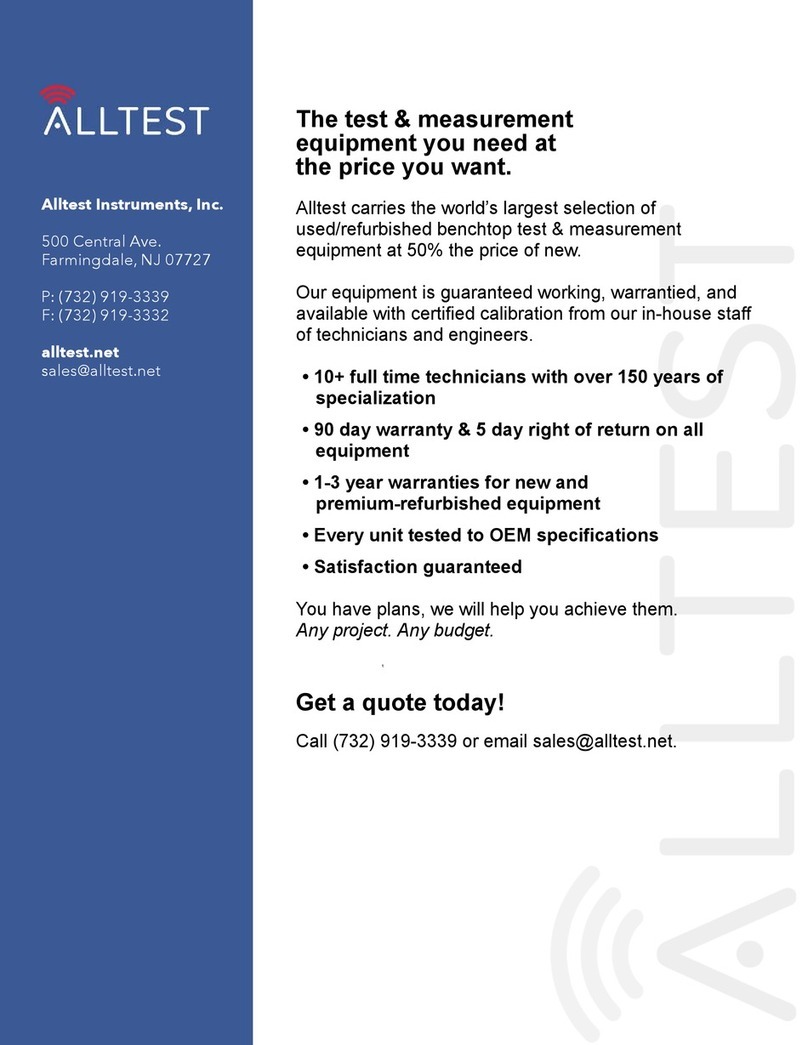
Tektronix
Tektronix 2430A user manual
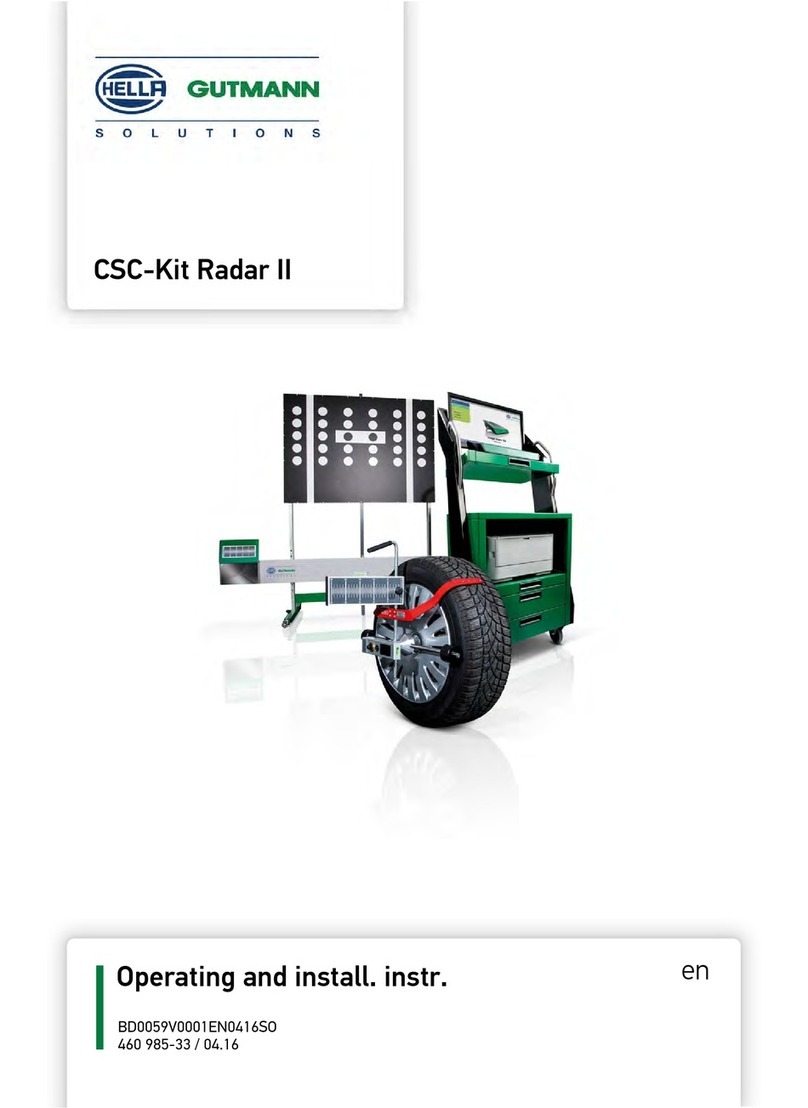
Hella Gutmann
Hella Gutmann CSC-Kit Radar II Operating and installation instructions
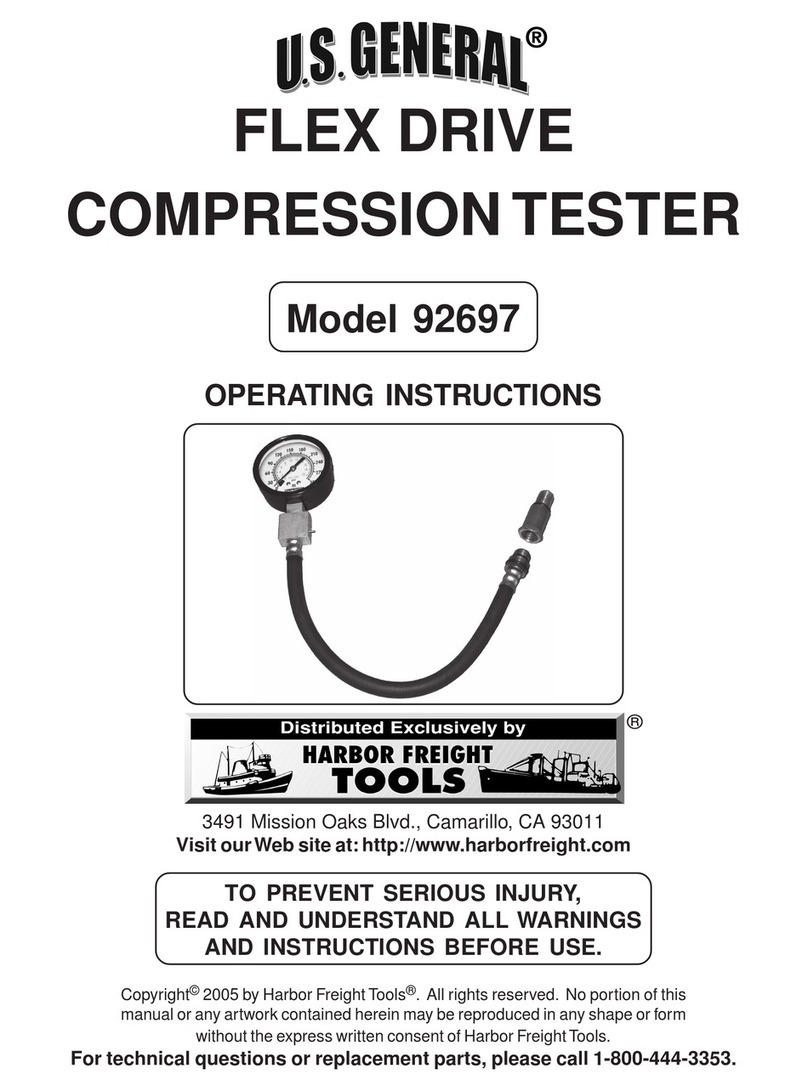
U.S. General
U.S. General 92697 operating instructions

afx light
afx light STROBE RGBW LED PRO instruction manual
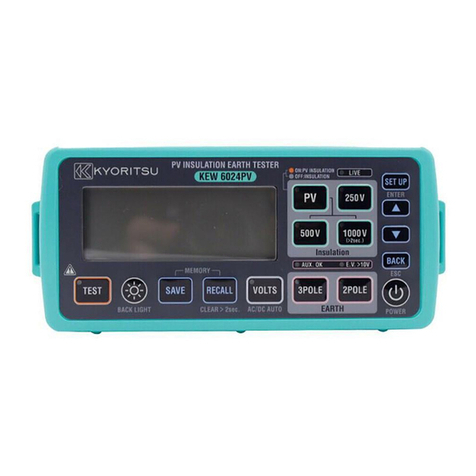
Kyoritsu Electrical Instruments Works, Ltd.
Kyoritsu Electrical Instruments Works, Ltd. KEW6024PV instruction manual
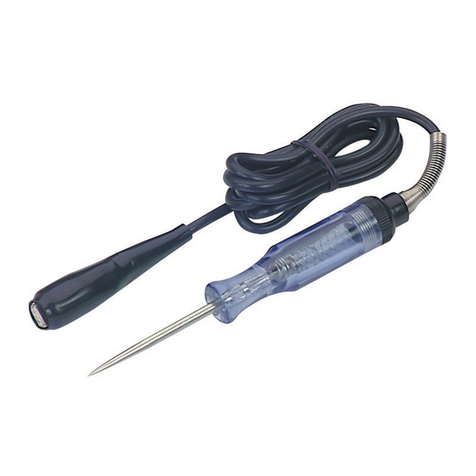
Centech
Centech 63603 Owner's manual & safety instructions

